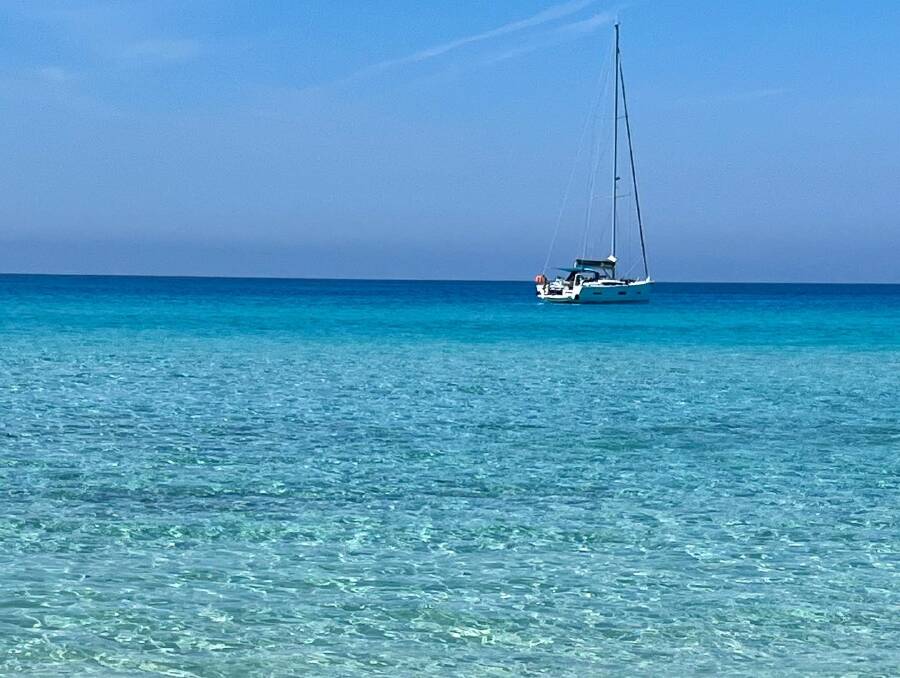
Is it French, or is it Italian? Sun-drenched Corsica might keep you guessing, but one thing is certain: there is no other place like it.
Weaving along a deserted road above the winking sea, we drive through a landscape of olive groves, hardscrabble farms and inscrutable hamlets. Suddenly, a striking striated green and white ancient stone church, adorned with fantastical naive images of beasts and humans, appears out of nowhere. Is it a sign, perhaps, for unpredictable things ahead?
Create a free account to read this article
$0/
(min cost $0)
or signup to continue reading
In the gathering dusk, we plunge deeper into the interior, navigating roads with potholes the size of bathtubs. Eventually, at the top of a hill, a cluster of farm cottages appears, wrought from the same silvery schist as the mountains that surround it.
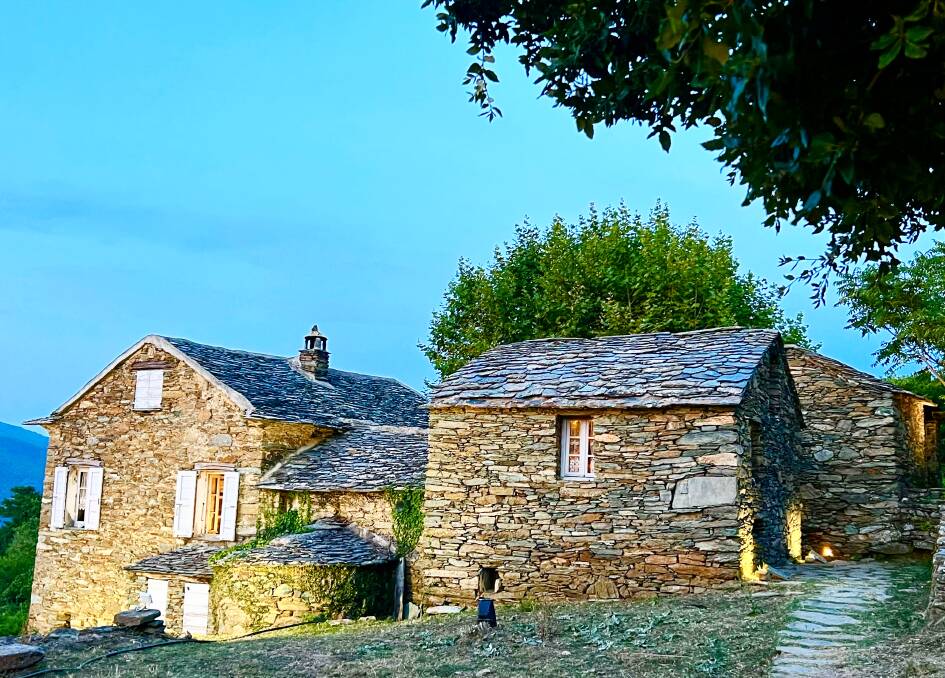
We've arrived at La Ferme de Campo Di Monte where, in a cosy familial setting that oozes the pride and soul of Corsica, Pauline Juillard makes beignets with fresh brocciu cheese, flavour-rich mountain charcuterie, a heady veal stew with melt-in-your-mouth lasagne, local cheeses with homemade jam, and a light fluffy fiadone cheesecake served with grappa and clementine confit.
This is just one of the many surprises we enjoy on this the fourth largest island in the Mediterranean, with its 1000 kilometres of beach-studded coastline, its twenty 2000-metre, sometimes-snow-capped peaks and its rugged hinterland blanketed in maquis, a scrubby bushland fragrant with aromatic sage, juniper, rosemary, laurel and immortelle (everlasting flowers), which bloom golden yellow in summer.
Nestled against the north-west coast of Italy and within spitting distance of Sardinia, "Corsica is a French island basking in the Italian sun", or so wrote Honore de Balzac. Indeed, you constantly have the feeling you're not in France but not quite in Italy either. It's a complicated story.
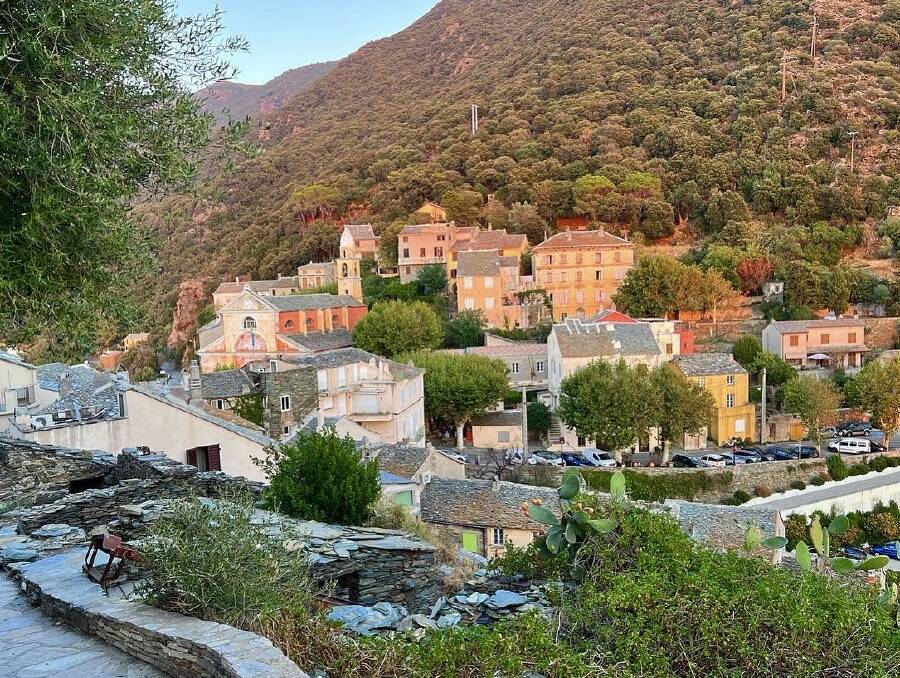
Just a fraction larger than Crete, Corsica was part of the Republic of Genoa for five centuries but it's always been singular. It even enjoyed a brief 14 years of independence in the mid-1750s under its Republican leader Pasquale Paoli, who created an enlightened constitution which included female suffrage. Eventually, the Genoans sold Corsica to France in 1769, the year that Napoleon Bonaparte was born in Ajaccio. That was more than 250 years ago yet some Corsicans are still champing at the French bit.
From its haunting polyphonic singing to its spectacular GR20, a long-distance hiking trail across a rugged interior; from its aromatic cheeses and wild boar charcuterie to earthy indigenous wine-grape varieties; from its powdery white sand beaches to red-rock cliffs... literally everything you see and do, hear and taste and smell, could only come from this place, this culture, this island.
Corsicans' heartfelt pride for their homeland has also meant they've resisted, sometimes violently, egregious commercialisation. While there are a few busy tourist towns (Porto-Vecchio, Bastia and Calvi come to mind), the vast sweeping coastline, granite outcrops and mountain valleys are blissfully free of excessive development and you'll still hear the Corsican language spoken in the many russet-coloured hill towns that dot the wild landscape.
Vistas at every turn
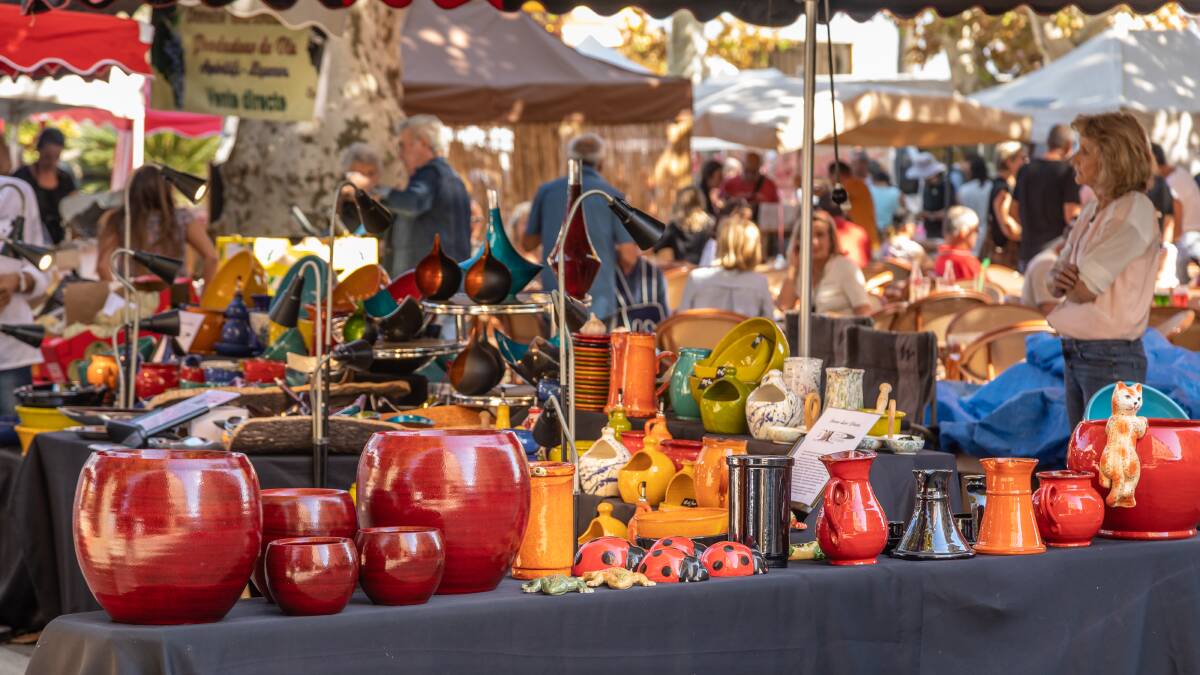
We embark on a loop road trip from Ajaccio, the capital. The island may only be 180 kilometres long and 82 kilometres wide but there are no freeways and no straight lines so the going is much slower than you'd expect. The jaw-dropping vistas at every turn, however, make it all worthwhile.
Heading north, the road weaves and dips around granite outcrops offering spectacular views of headlands, sandy beaches and the sparkling blue Med. Just beyond the pretty village of Piana, we are gobsmacked by the sheer jagged red rhyolite cliffs and sea stacks of the fjord-like Calanques of Piana and go for a short walk to admire the fantastical rock shapes carved by the wind.
You constantly have the feeling you're not in France but not quite in Italy either.
Continuing northwards, we discover why the Genoese built an impregnable citadel at Calvi to guard the north-west corner of the island. Inside, we wander its labyrinth of cobblestoned alleyways and stairs and, from the top, gaze across red-tiled roofs and the boat-filled marina to a sandy beach lining the half-moon bay with an arc of forested mountains beyond.
Next, we weave inland following the Route des Artisans to explore cobblestoned medieval villages that are strung like ancient gems across the hillsides of the Balagne region. We discover baroque churches, old wash-houses, and the workshops of luthiers and music-box makers, potters and painters. Pigna, with its music museum and summer polyphonic music festival, is a highlight, but even here the tourism doesn't overwhelm and there are no shops selling Chinese-made refrigerator magnets.

Back at sea-level we explore the pretty town of L'Ile Rousse, built on a grid by Corsican nationalist Pasquale Paoli to create a port not controlled by the Genoese. It's named after the red rock islet that created its natural harbour. We lunch on sparkling fresh seafood at the indoor-outdoor Stella Mare cafe overlooking a powdery white sand beach on the town's outskirts, then take a dip in the translucent waters.
Heading inland, we stop for a swim in a serene natural pool (one of many in Corsica) in the pretty village of Urtaca before winding up into a soaring mountainous landscape of granite and schist. We visit the Corte citadel, its walled castle on a rock overlooking the town. Inside, the Museum of Corsica's remarkable ethnographic collection reveals the pastoral soul of Corsica, which is enlightening for our upcoming hike to Lake Melu, one of the best day hikes in Corsica.

We drive beside a cool clear river, shaded by pines, before twisting and turning upwards along the one-lane road as it weaves around the jagged rocks of Restonica Gorge in the shadow of Monte Rotondo. It's a harsh, unforgiving landscape, yet home to herds of hardy Corsican goats and sheep.
At the start of the hike, we pick up sandwiches of brocciu cheese and cured ham at La Bergerie de Grotelle, where Claire and her father Jean Paul Chiesi milk their goats and make cheeses on site. The hike to the lake starts alongside the aquamarine waters of the Restonica River then climbs a steep rocky path with chains and ladders to help you reach the lake. We picnic there while watching bearded vultures soar on the thermals.
A jet boat to the desert
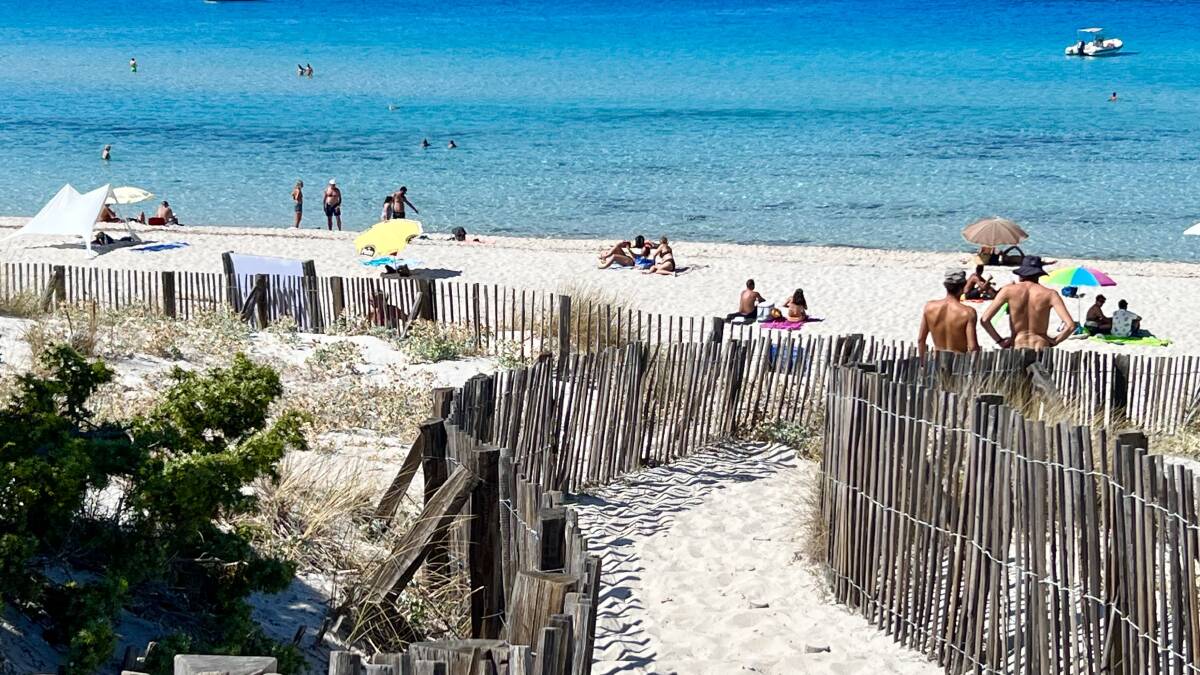
Our next adventure starts from the 16th-century town of Saint-Florent with a 20-minute jet-boat ride along the north coast to the Desert des Agriates. The only officially recognised desert in Europe, it's a protected, wild maquis-covered landscape that's fringed by some of the most beautiful beaches in Corsica, if not all of Europe. We're dropped off at Saleccia Beach, a gentle kilometre-long arc of the finest pale pink sand lapped by aquamarine waters that deepen to Curacao blue at the horizon.
As always seems to be the case in Corsica, no matter how remote the location, there's a little restaurant nearby offering excellent food. This time it's a simple wooden structure with sail shades that's tucked into the pine forest where we savour excellent local tuna tartare and a minerally white from the nearby Patrimonio wine region.
Later, we walk through the maquis past the ruins of shepherds' huts to the equally lovely Lotu Beach, which sports yet another rustic restaurant overlooking the water.

Many say that Cap Corse, which juts toward mainland France in the north-west of Corsica, is a microcosm of old Corsica, its spine rugged and mountainous, its beaches wild, its villages moving to old ways. We drive a sinuous road along its vertiginous west coast to Nonza, perched high on cliffs above the sea, its rose-coloured church dedicated to Saint Julie (the patron saint of Corsica). We swim at its black sand beach then climb past ancient houses to its green schist watch tower before dinner on the terrace of La Sassa, as a fiery sun sets across Saint-Florent Gulf.
Labyrinths and seafood feasts
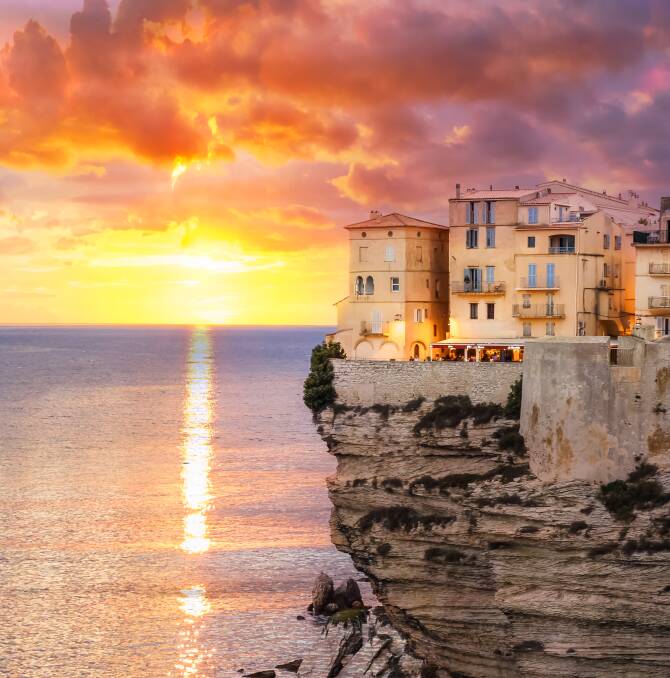
It's a three-hour drive to Bonifacio, a spectacular ancient citadel perched 70 metres above the Mediterranean on white limestone cliffs, on the southern tip of Corsica. We enter the old town via the bastion's medieval drawbridge and get lost in its labyrinth of alleyways.
Even more exhilarating is the six-kilometre walk along the cliffs to Cape Pertusato lighthouse. We follow a trail through a lunar-like landscape down the sculpted chalk cliffs, past a giant open sea cave, to Saint-Antoine Beach for a refreshing swim surrounded by schools of luminescent fish. The walk back rewards us with majestic vistas of Bonifacio.
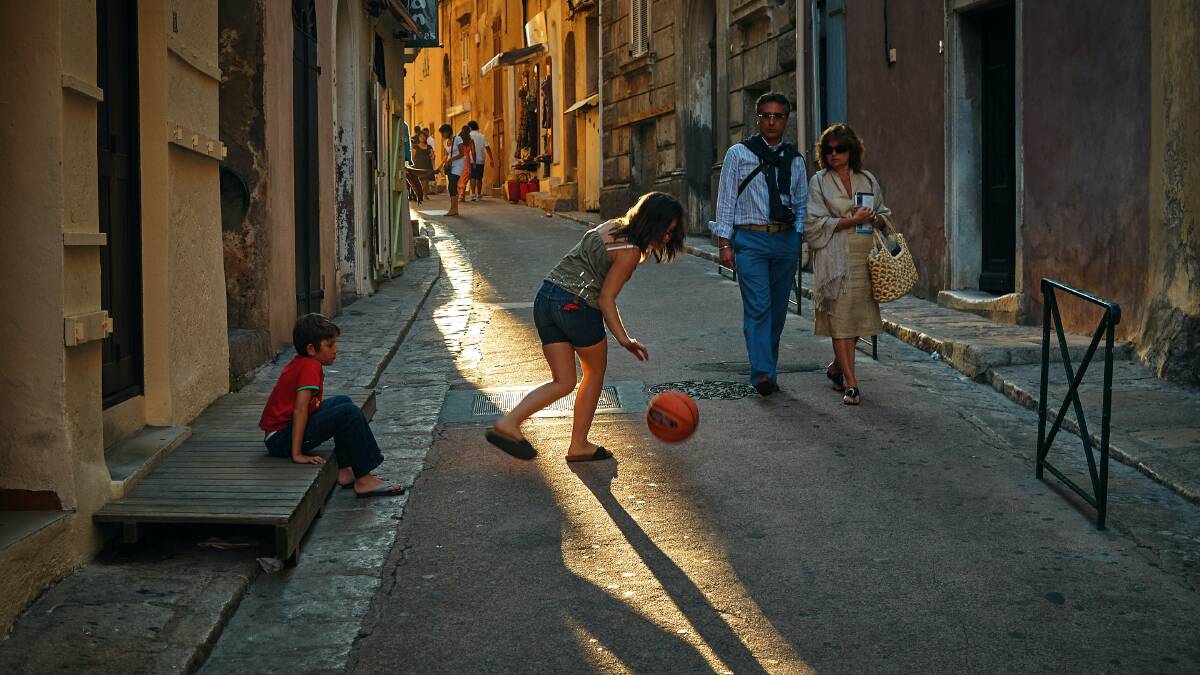
We continue our journey westwards to explore more hill towns and untamed beaches in Sartene in Corsica's south-west.
Fishing boats and pleasure craft clunk together under a crimson sky and a gentle breeze drifts across Chez Antoine's open-air restaurant terrace in the tiny village of Tizzano, which has everything you need for a relaxing seaside holiday... a beautiful beach, a fishing port, two great waterfront restaurants and a grocery selling local specialities.
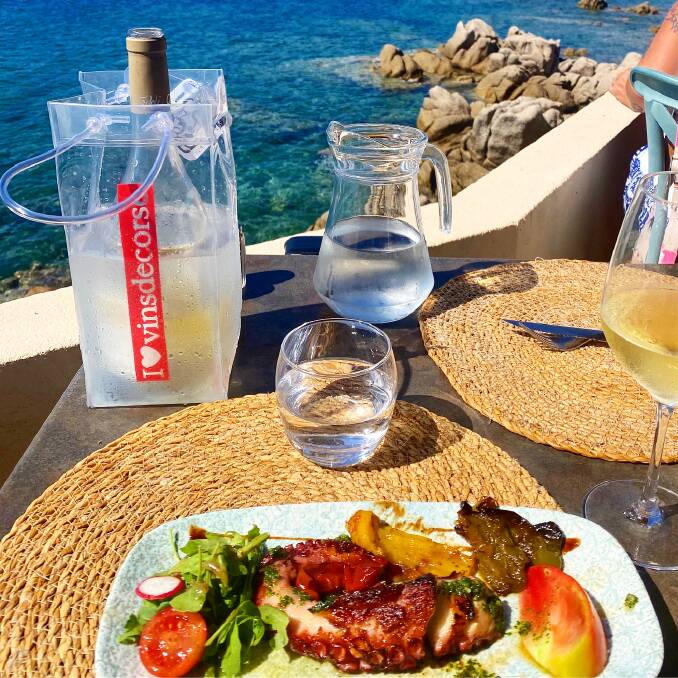
The waiter digs out a crumpled piece of paper with a long list of local fish, most of which I've never heard of, denti, corb and chapon to name a few. I request his advice and, after carefully considering the options, he suggests the denti, a large, juicy, flavourful fish that's an extra-special local delicacy. It arrives, glistening and succulent, after being expertly cooked with summer vegetables on the wood-fired grill. A delicious aromatic local wine, made with Corsican vermentino, tastes nothing like what you might find in Italy.
On our last day, we discover a nearby secret beach, its iridescent blue waters framed with a crescent of golden sands and the ever-present fragrant maquis.
Hiding in plain sight, rugged, full of delicious surprises, and remarkably unspoiled, Tizzano and its hidden beach is Corsica in a nutshell and I feel so happy to have found it.
The writer stayed as a guest of Domaine de Murtoli and Aethos Corsica
TRIP NOTES

Getting there: There are direct flights to four airports in Corsica from Paris, Nice, Marseille, London, Rome and other European cities as well as ferry services between Marseille, Toulon, and Nice to Bastia, Calvi and Ajaccio. Ferries also run between Northern Corsica and ports in northern Italy.
How long to go for: Corsica may appear to be quite small but it is mountainous with winding, single-lane roads so it takes much longer than you expect to get anywhere. Ten days is really the minimum to explore the whole island. Two weeks would be much better. If you only have five days, for instance, you'll have time to discover some of the south or the north of the island and a little of the centre but not everything.
Staying there: Aethos Corsica is a serene hotel in a beautifully restored manor house with lap pool and gardens in the hill town of Oletta in northern Corsica, 15 minutes from the beach. See aethos.com/corsica
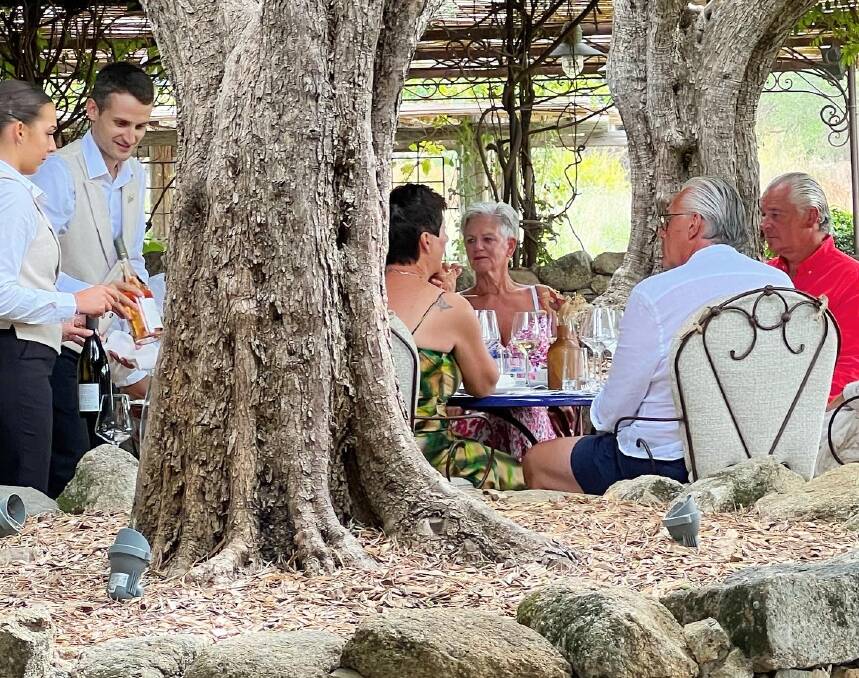
In the Sartene region of south-west Corsica, the Domaine de Murtoli is an exquisite retreat behind a seven-kilometre beach on a 2500 hectare working farm with vineyards, olives groves, cows and sheep. Stay in the atmospheric farmhouse with Michelin restaurant or in one of the restored sheep herders' huts each with private pool and indoor and outdoor kitchens. See murtoli.com
Explore more: visit-corsica.com/en
FIVE MORE THINGS YOU MUST DO
ONE: Take a boat trip in north-west Corsica to admire the UNESCO heritage-listed Calanques de Piana and the nearby Scandola Nature Reserve, a marine biodiversity hotspot that's home to ospreys, gannets, grouper, moray eels, sea grasses, red coral and gorgonian fans. corse-emotion.com
TWO: Visit some of Corsica's distinctive wineries, many of which specialise in the indigenous grape varieties such as sciacarello, nielluccio and vermentino. Patrimonio in north-east Corsica, the island's first wine region, is a great place to start. Further afield, Domaine Saparale in Sartene offers wine tasting and accommodation in traditional bergerie huts while Domaine de Peretti della Rocca in Figari has a delightful cellar door restaurant and accommodation overlooking the vines. saparale.com; deperettidellarocca.com
THREE: Enjoy an easy two-hour signposted walk beside the Cascade des Anglais, a series of waterfalls along the forested Agnone Valley in Central Corsica. Depart from the Vizzavona train station. visit-corsica.com/en
FOUR: Visit the Filitosa prehistoric site in south-west Corsica with its sculpted warrior-like standing stones, prehistoric towers and village of stone huts. filitosa.fr/en/prehistoric-site
FIVE: Explore beautiful Pinarello Bay in south-east Corsica on a half-day kayak tour which also includes snorkelling as well as a short walk to an ancient Genoese lookout tower where you can taste local specialties while admiring a panoramic view of the coastline. sporsica.fr/balades-decouvertes




